Category: Life Sciences
“Crucial Gaps” Filled by Fossil Discovery? We’ve Heard That Before…
Another year, another fossil with some serious media backing. This week it’s a Homo habilis said to be “almost-complete” — of course, the report from the Telegraph also claims that Homo habilis was “previously unknown,” so you might want to take that with a grain of salt. In fact, you might want to read a bit more before you throw that OMG Missing Link Found! party I know you were planning. (Squatch is going to take it hard when you cancel his first music gig since the Sonics left town.) This is the same species that was reported in an AP article from 2007 which disowned Homo habilis as a human ancestor. As far back as 1999, a paper in Read More ›
Two Articles Defending Stephen Meyer and Signature in the Cell in Salvo Magazine
We’ve recently seen a lot of dialogue between proponents of intelligent design and critics of Stephen Meyer’s book Signature in the Cell. For example, Richard Sternberg has a fascinating series that uncovers some hints at function in SINE elements through unexpectedly conserved patterns that contradict the standard phylogeny (see Part 1, Part 2, Part 3, and Part 4). Or, there’s Paul Nelson’s rejoinder to Jeffrey Shallit on whether the weather provides an example of natural processes producing specified and complex information. There’s also Stephen Meyer’s response to Francisco Ayala, as well as responses to Ayala from Jay Richards and David Klinghoffer. I recently decided to jump into this fray, publishing two articles in the latest issue of Salvo Magazine defending Read More ›
Meyer Responds to Stephen Fletcher’s Attack Letter in the Times Literary Supplement
Ever since Thomas Nagel selected Signature in the Cell as one of 2009’s best books, the Times Literary Supplement has had a vigorous back and forth in its letters section. The last salvo published was by Loughborough University chemistry professor Stephen Fletcher. The response below was submitted by Stephen Meyer to TLS, but they opted not to publish it. To the Editor The Times Literary Supplement Sir–I see that the Professor Stephen Fletcher has written yet another letter (TLS Letters, 3 February, 2010) attempting to refute the thesis of my book Signature in the Cell. This time he cites two recent experiments in an attempt to show the plausibility of the RNA world hypothesis as an explanation for the origin Read More ›
Does Darrel Falk’s Junk DNA Argument for Common Descent Commit “One of the Biggest Mistakes in the History of Molecular Biology”?
Recently I was e-mailed by an individual who had read the book Coming to Peace with Science, by Darrel Falk, president of the BioLogos Foundation. This person was interested in a response to the arguments for human/ape common ancestry in Dr. Falk’s book. Not having read Dr. Falk’s book before, I wrote back that I hadn’t yet read the book but had a strong suspicion that it would argue that shared non-functional (aka “junk”) DNA between humans, apes, and other species is evidence of their common ancestry. This is an extremely common argument from theistic evolutionists–Francis Collins made it in The Language of God (and Collins wrote the foreword to Dr. Falk’s book). Of course in 2010, we’re seeing more Read More ›
Beginning to Decipher the SINE Signal
Remember the analogy of the two moons I used yesterday to discuss the distribution of SINEs in the mouse and rat genomes? Well, I am going to use it again today, but only for a moment. Moon Mysteries and the Lunarlogos FoundationSuppose you are keenly interested in the topography of one of the moons, named Y6-9. Suppose also that the books you first select to read on the topic are popular works, written by “experts” who are “living legends.” As you read through the works, you find paragraphs here and there about how utterly decrepit Y6-9 is, and how this space body exemplifies eons of random events. The authors argue that we already knew all there was to know about Read More ›


